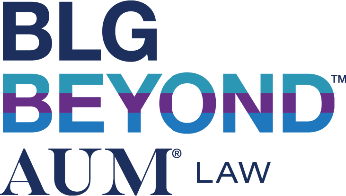The Ontario Securities Commission’s (OSC’s) Investor Office leads the OSC’s efforts in investor engagement, education, outreach and research. The Investor Office launched a survey that ran between September 27 to October 4, 2021, to assess the financial literacy of Canadian investors. The overall objective of the survey was to determine how Canadian investors’ perceptions of their financial knowledge compare to their ability to answer questions measuring financial literacy. The survey polled 2,591 Canadians nation-wide, and on September 7, 2022, the OSC released the results and insight gathered from the survey results.
In the introduction to the report, the OSC notes that as Canadians are taking on more responsibility for their own investing, to do this effectively they must have the financial acumen to participate in Canada’s capital markets. The results of the survey revealed some interesting tidbits, including the following key highlights:
- Investors have the least knowledge when it comes to investment costs and investor protections;
- About 3-in-10 Canadian investors self-assessed their financial knowledge too highly; and
- On average, self-directed investors were the most financially-literate.
There were 27 questions, which were broken up into 5 financial literacy themes:
- Organization for Economic Co-operation and Development (OECD) Core Questions – these questions are used by the OECD internationally as a benchmark for financial literacy. They are used to gauge basic understanding of the importance or impact of investment risk, diversification, compound interest, inflation, diversification, bond vs. interest rate, and that mutual fund returns are not guaranteed. Of the Canadians polled, 68% of these questions were answered correctly.
- Core Investing Principles and Concepts – these questions tested the understanding of investing principles and concepts, such as leveraged investing, past performance, time horizon, and break-even calculation. These questions were answered correctly about half of the time.
- Investment Costs – these questions gauged awareness of the link between fees and returns, Management Expense Ratio (MERs), advisor costs, and the different types of funds. This section received the lowest number of correct responses, with only 36% correctly answered. While respondents correctly answered the question about whether fees are linked to returns 76% of the time, the impact of MERs only had 35% correct responses, and advisor cost questions received only 22% correct responses. The results of this portion of the study may help to explain some of the emphasis by regulators on current initiatives such as the proposals relating to total cost reporting.
- Registered Accounts – the key features of these questions centered around the differences between registered account types (RRSPs, TFSAs, and RESPs). While respondents answered 69% of the questions correctly, one question pertaining to RESPs was only answered correctly 38% of the time.
- Protecting Your Portfolio – of the questions posed about investor rights and responsibilities, complaint handling (internal and external), and checking registration, on average 44% of these questions were answered correctly.
The survey results will help the OSC’s Investor Office understand the identified knowledge gaps of the respondents and direct its efforts in helping Canadians improve their investing knowledge, by re-engineering its investor resources, outreach efforts, and policy developments going forward.
September 28, 2022
